Holly Tea With Vitamins A & C
This time of year in the South — late fall, early winter —some of the hollies are so scarlet with berries that even the tourists can spot them while doing 85 on Interstate 95, if they bother to look. The hollies, usually Ilex cassine, resemble red torches beside the roadway. Their brilliant berries are food for woodland creatures. You are not a woodland creature, so leave the berries alone. However, the leaves of some hollies can be carefully made into a tea, with or without caffeine. The leaves also have vitamin A and C and are packed with antioxidants.
The often-preferred holly for decaffeinated tea is the gallberry, Ilex glabra (EYE-lecks GLAY-bruh) which means smooth oak. Why oak? Well, it’s a bit of a linguistic fudging. There is a European oak tree that resembles the holly and it was called … in Dead Latin, Ilex, or the Holly Oak. So when hollies were being named, their leaves were like the holly oak so Ilex became their genus name even though hollies are not oaks. It’s just one of those things one can expect from a dead language only academics like, whereas the older Greek, still spoken, is doing well and is not misnaming plants. Also called the Inkberry — because of its non-edible black berries, and the Bitter Gallberry — dried gallberry leaves taste exactly like orange pekoe tea, except, as mentioned, without the caffeine. But, now a bit of qualification:
The Yaupon Holly, which has the highest caffeine content of any plant in North America, is called Ilex vomitoria (EYE-lecks vom-ih-TOR-ee-uh.) Yeph, it means what you think it mean: vomiting oak but we know it is really vomiting holly… still not pleasant. Native Indians used to make an every-day caffeinated drink from its young leaves and twig tips. However, for solemn ceremonies they would boil up an intentionally strong brew only for the men to drink. The fellow who could hold the concoction down the longest was entrusted with important missions. Osceola means “yapon singer” meaning he could hold the stuff down the longest, which brings me back to gallberry.
To make gallberry tea, just collect some leaves, air dry or dehydrater dry them (that’s important) then roast them in a slow oven until golden, then crush. Pour hot water over them, let them seep for two minutes, and enjoy. Unfortunately, while that tea tastes just like regular tea, and has no caffeine, it does not like me. I seem to be the only one but it is the first plant I’ve run into that causes me problems. If I drink Gallberry tea within 40 minutes I have to go pray to the porcelain god.
Traditionally Yaupon was processed differently. The leaves were kiln dried then powdered in mortars. Some of the powder was put in a bowl and cold water poured over it and allowed to sit a few minutes. Then hot water was added. Some writers say the ceremonial brew was made from green Yaupon that were used fresh, read not allowed to dry. Roasting, however, does increase the availability of the caffeine.
Dr. William A. Morrill. a plant PhD, wrote in 1940 there are two ways to make holly tea. One is to boil the cured leaves like coffee, not seep them like tea. (Cured means oven dried or steamed.) But, of the Yaupon, he said the best holly tea was to use an equal mix of chopped brown dry roasted and steamed green leaves (remember you must dry them first, then roast or steam.) I got his information from a crumbling, out-of-print book. Only you and I know it. While Yaupon Holly tea does have a lot of caffeine it is practically free of tannin, which reduces bitterness considerably. It is also full of antioxidants which are good for you.
The form of I. vomitoria that has the most caffeine is the Weeping Holly or Ilex vomitoria var. “pendula.”Feeding” it nitrogen also increase the amount of caffeine. The ornamental holly, Ilex nana (EYE-lecks NAH-nuh) is a female dwarf version of the I.
vomitoria. Ilex schiller/schilling is a male dwarf version of the Ilex vomitoria. A tea of either made from dried leaves is caffeinated. Of the two, here in the South the dwarf versions is the most commonly encountered. As a landscape plant they are actually much easier to find than the parent Ilex vomitoria., depending on where you live. The Yaupon holly was a very popular drink into the late 1800s. Why it fell from favor is not known though coffee might have had something to do with it. In the 2009 Journal of Economic Botany an article recommended Yaupon become a commercial crop again, especially considering its high levels of antioxidants.
If your dwarf holly has black berries (and is not the Ilex glabra) and grows upright (pencil like) then you have Ilex crenata, a common northern landscape holly. I don’t know if that is consumable. Two other hollies, however, make good tea without caffeine: the American Holly, Ilex opaca ( EYE-lecks oh-PAY-kuh) and Ilex verticillata, (EYE-lecks ver-ti-si-LAH-tuh.)
The American Holly was a popular tea during the American Civil War. Interestingly, the American Holly and the English Holly were used to clean chimneys because of their stiff, toothy leaves. Holly branches and leaves were tied together into a large bundle then attached to the middle of a long rope. The rope was fed down the chimney and the bundle pulled up and down until the chimney was free of soot and other deposits.
The Dahoon Holly is the full-sized tree used most often for landscaping. It’s very leafy and with lots of berries. American Holly is the one found most often in Christmas wreaths with curly, pointy leaves. If the wreath hasn’t been sprayed, you can recycle it in your tea cup. And, while holly tea is fine and dandy — for most, he says with envy — let me remind you: Don’t eat the berries. They are mildly toxic to an adult. Twenty to 30, however, is a lethal dose for a small child. I have seen hollies planted in landscaping around primary schools here in Florida. Now ain’t that brilliant. The Dahoon Holly, Ilex cassine (EYE-lecks kuh-SIGH-nee) makes a tea without caffeine but it is the least recommend of them all. It can cause headaches and can be laxative.
One little aid in identification of all hollies including the gallberry: They will have at least three or more points or “tooths” on the leaves, minute in the gallberry, like tiny, tiny, soft thorns, makes it kind of look like the Boy Scout salute. If you take a very close look at the gallberry picture, you can see the points on the leaves. All hollies have them, sometimes obvious, sometimes very muted and rudimentary, but there none the less. The Dahoon Holly will have toothless leaves and leaves with teeth though those with teeth the teeth are usually on the upper part of the blade.
The English Holly, or European Holly, Ilex aquifolium, (EYE-lecks a-kwee-FOH-lee-um) found in Europe, is a common landscape plant in the United States and is naturalized in Ontario and the pacific coast California to Alaska. You’ll know it when you see it, it looks like the American Holly
except it often has an edging of yellow or white around the leaf. Its leaves have been dried for tea, the roasted berries used as a coffee substitute (doubtful and be cautious) and the berries are also used to make a brandy. Ilex latifolia leaves are made into tea in Asia, the seeds into a coffee. The jury is out on Ilex cornuta (EYE-lecks kor-NOO-tuh.) The Chinese have a lot of herbal applications, the tea is supposedly a contraceptive for women, and whether the berries are edible or not is iffy. I mention it because the Ilex cornuta var Bufordii is a common landscape plant sold at home do-it-yourself stores in Florida. Yerba mate, the most common drink is South America, is made from the Ilex paraguariensis. ( EYE-lecks para-gwar-ee-EN-sis)
One more thing…there is another gallberry holly, called Ilex coriacea EYE-lecks kor-ee-uh-KEE-uh.) It has reddish twigs and the leaves have little spines on them, whereas the gallberry has dimples usually. The I. coriacea grows much larger — a small tree to fifteen feet is possible —and there are some reports the berries are edible, hence the nickname Sweet Gallberry. Gray’s Manual of Botany says the berries are “in an axil, soft and pulpy when ripe, dropping in autumn, said to be edible.” While I have seen the Sweet Gallberry in north Florida near the headwaters of the Santa Fe River it has never had any berries on it for me to try.
Cassine is from an American Indian name for a plant with similar fruit. In early writings both the Dahoon and the Yapon were called Cassine. Opaca means shady because the plant can grow in some shade. Verticillata means in a whorl and coriacea means leathery. Cornuta is bearing horns or spurs, usually the flowers. And aquifolium means …. holly-like leaves… THAT certainly took imagination.
Incidentally, gallberry is considered a quality and consistent source of bee nectar in Florida and is the top third or fourth producer of honey. If a bee can like it, maybe you can, too.
Keying out Ilexes in Florida:
Group One
Leaves thin, membranous
Leaves evergreen, entire or rarely denticulate, fruit dull purplish
to black, plants of south Florida only ….. Ilex krugiana
Leaves deciduous
Leaves pubescent on most of the upper surface, margins serrate
Leaf blades elliptic with a rounded leaf base, 6-9 cm long….. Ilex amelanchier
Leaves smooth on the upper surface, margins crenate to serrate
Leaf blades oblanceolate to ovate, 2-6 cm long, margins crenate ….. Ilex decidua
Leaf blades elliptic to ovate, margins serrate to crenate
Leaves with conspicuous veins, flowers and fruit appear singly or
in clusters up to 3, in the leaf axils….. Ilex verticillata
Leaves without conspicuous veins, flowers and fruit appear
clustered from spur shoots ….. Ilex ambigua
Group Two
Leaves coriaceous, evergreen
Fruit red to yellow, Leaf blade with sharp pointed teeth, these are usually regularly
spaced ….. Ilex opaca
Leaf blade entire, crenate or serrulate, Leaf blades with a rounded apex ….. Ilex vomitoria
Leaf blades with a sharp, pointed apex
Leaf blades 1-4 cm long and usually less than 1.5 cm wide,
margins entire, tip sharp pointed ….. Ilex myrtifolia
Leaf blades generally longer than 4 cm and wider than 2 cm,
may have a few teeth at the tip or with a single sharp
point ….. Ilex cassine
Fruit black
Leaves crenate, leaves often cupped, 3-5 cm long
….. Ilex glabra
Leaves with a few small teeth, leaves somewhat cupped, 4-7 cm long
….. Ilex coriacea

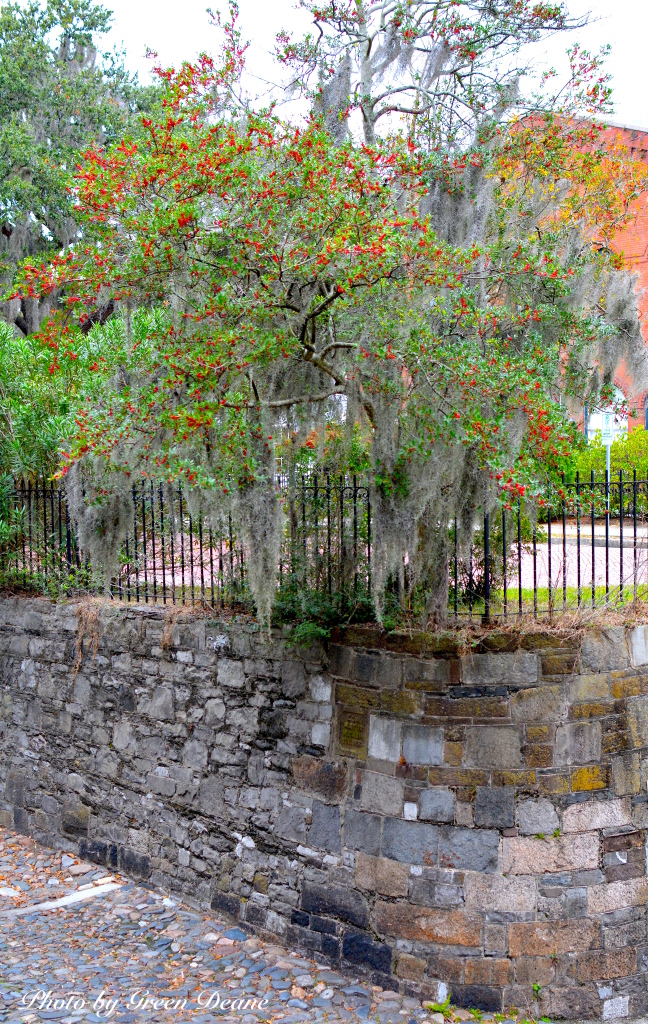
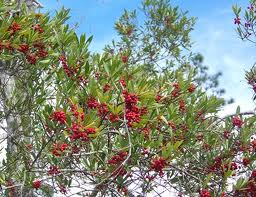
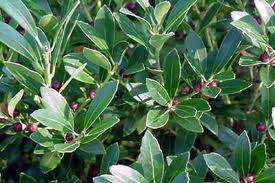
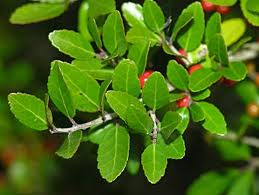
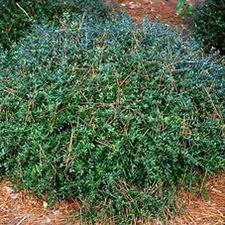
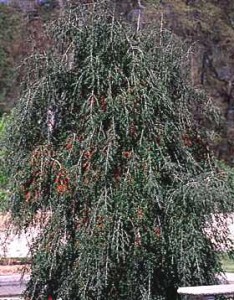
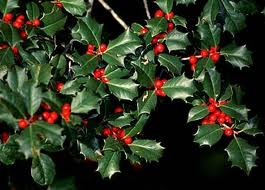
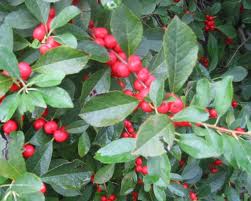
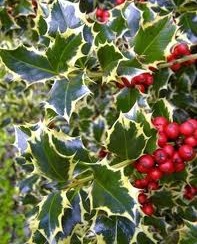
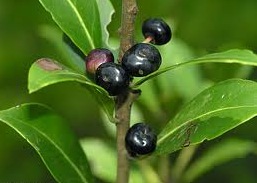
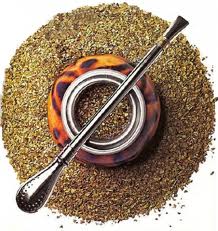

American Holly grows in great abundance in Alabama and Yaupon is is fairly common as well.
My American Holly is infested with mealy bugs. I have tried some home remedy sprays but they only spread. Would you have anything to recommend or should I simply cut the tree down and let it start growing fresh. I am afraid the bugs will spread to my order plants? THANK YOU.
I was looking up info on yaupon holly when I came across this site, and surely enough, I found yaupon holly! You have some interesting info mention about this holly. My wonder is, why does the name mean ‘vomiting
oak’….when ‘ilex’ is clearly the genus of holly and ‘vomitoria’ indicates vomiting… but quercus is the genus of oak?
Thank you!
Because in Dead Latin Ilex means oak. Early Europeans to North America mistook the Holly for an Oak because the leaves were similar to their oaks in Europe so they called it Ilex. The name stuck for the hollies eventhough it means Oak. The oak genus is now Quercus.
Green… I tried my first tonight… I may have a caffeign buzz…
I air dried (indoors) a couple of branches the last few months.. they were mostly brown (still a hint of green).. but they crumbled easily in my fingers… I counted out 40 leaves, crushed and placed in a tea-ball..
water to a boil, placed them in for 3 minutes or so then cut off heat… simmer for 10 minutes, then pour out in pitch and repeat for the same leaves… even with two boilings, wondering if the tea should have been a darker green…
However, after two tall glasses I do feel the caffeign… Is this normal? Should the tea be a light green, or should I have doubled up on the leaves.. 80 instead of 40…
And now I know where the town name Osceola, Missouri originated.
What are your sources for Ilex glabra and decaffeinated tea? I have also used your information for other plants in my intern project, more resources would be great!
My sources? You mean my references… with the Ilex glabra it was Professor Morton’s book “Wild Plants for Survival in South FLorida.”
Yes, sorry. Thank you its on my to read list.
So, red berries with spines, thorns or the like, but not necessarily good to eat. The other exceptions that rule are tomato & apple, having no spiky bits.
There really are no “rules” regarding berries except nearly all white berries are toxic or inedible.
Any info on Ilex decidua (deciduous holly / possumhaw)?
You didn’t mention Ilex ambigua ( Sand holly) which grows here in Pinellas county. Any particular use?
Can you make tea from Ilex ambigua (Sand holly) ?
I have no information on I. ambigua.
I am not sure which holly trees I have in my yard but I have had them a couple of years. Both years they have been swarmed by love bugs!
I mean 50 -100 pairs or more on each tree during the “season”. Any idea why?
Can Ilex decidua be made into a tea/ is it safe to drink? I made a tea of it by roasting the leaves and drinking yerba mate style and didn’t feel any bad effects but was wondering if it had any poisonous/bad chemicals in it?
Thank you!
I’m hoping that you may be able to help me figure out how to get my 2 Dahoon hollies and my 3 dwarf Burford hollies to bloom. Your wonderful article is the most informative one about holly leaf tea that I’ve found and I thought your gardening expertise there might extend to the obvious pollination problem.
So…I’m following my intuition and asking for your help.
No one has been able to give me answers that help, even the local County Extension Office.
Here’s the long frustrating story:
My Dahoon hollies, now close to 20′ tall, one male ( as I was assured) and one female, haven’t flowered since they were about 5 years old, and even then each one only had about 10 flowers. The male flower had a round white dot in the middle of the flower. The female one doesn’t.
I was told that the male flower should have the dot in the center. Because neither has flowered for the last 10 years or so, could it be because the male tree is a female? I actually had 5-7 berries on each one the last time it bloomed.
I use organic holly fertilizer on them once or twice every spring. The soil is good. Zero pruning. They get about 8 hours of hot Tampa sun. They’re too big to move now, so do you have any suggestions about how I can get them to flower and finally get some red berries for Christmas and some food for the robins when they migrate through here in February?
Of my female Dwarf Burford bushes, who get full sun until 5pm, the oldest gets about 5 berries a year. None on the other 2. I thought these didn’t need a male to bloom.
There are several old hollies within a half a mile who are covered with berries each year so if they can get pollinated, why can’t mine?
The local County Extension Office wasn’t much help.
Would a severe pruning to shape them help?
My 45 years as a passionate gardener and an herbalist for 30+ years, I should have figured this out by now! I’ve had conversations with them, of course, and all I’ve been told is maybe not enough sun on the Dahoons. Or more fertilizer.
I assure you that I’m not any crazier than a normal gardener!
Many thanks for help. I’d even appreciate some words of encouragement, if you aren’t able to come up with an answer. 🦋
I don’t comment on web pages. Ever. But I just found and fell in love with your site. Your incorporated dash of humor in every post is refreshing and tasteful. The depth of history for the plants you’ve encountered /studied is nourishing.
A fellow forager myself, I spend most of my time in the forest and Im always looking for something. Foraging, to me, is a never ending scavenger hunt. I’ve always been categorized as a weirdo/outcast and the trees and flowers and lichens were more tolerant of my harmless quirks than my peers. I was raised in Michigan but moved to Southeast Alaska just before I was 21. Since moving here, I have taught myself everything I know about the local flora. It’s quite diverse! My knowledge to the average person seems quite wide – but I know I’ve barely scratched the surface. Layman.
I especially liked the posts of plants from Maine because it has more in common with my state. Any chance you’re still posting on this site? I haven’t seen any more recent posts..
Thank you for your kind words. Yes, I have been posting a new plant every week recently and have some 17 waiting to go. I am trying to update the site, reduce typos and include nutritional information. I just turned in a manuscript for a book, to be published next year. It has 422 articles covering 1315 plants.
Could you share any info about your book for preorders or similar? I’ve found your material invaluable for , sheesh, 11 or 12 years at least. Would love to repay the favor
I finished the book in 2020. It is schedule to be published in the spring of 2023.
Hi Deane,
Have you tried tea from Ilex glabra leaves that have been dried but not roasted? I am curious what the roasting process might do in this case.
Thanks,
Stephen
Roasting makes the tea easier on my tender tummy.